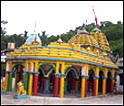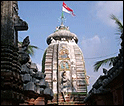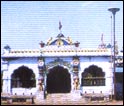From the history of Nayagarh District it reveals that the District was founded by Suryamani of Baghela dynasty who had came to Puri on a pilgrimage from “Rewa”of Madhya Pradesh. He had built his fort here and adopted Tiger Head as a state symbol.Ninth king of this dynasty “Bagel Singh” (1480–1510) shifted his capital to the District. As per his name this place was known as “Baghua Nayagarh”. He was a vaishnavite and is known to have made small icons of Shree Vigraha Chaturdha Murty and installed the deities in a mudaltar on the foot hill of Balarama for the first time in the history of Nayagarh District.

During the rule of 12th King of Nayagarh District, Raghunath Singh (1565–1595) had already captured Odisha and the king Mukunda Dev (1565) was defeated in Gohritikira and died. Taking advantage of the flaccid political situation, Raghunath Singh attacked Ranapur and captured Odgaon, Sarankul and Baunsiapara area from Ranapur estate and took control of the Nayagarh–Daspalla border area from the King of Boudh and Sunamuhin area of Odgaon from the King of Ghumusar. He also captured a portion from Banpur.
Just before his death, the King Ragunath Singh divided his estate between his three sons. Harihar Singh got Nayagarh and Jadunath Singh got four Khandagrams (large area of land) which was known as Khandapara later. It was his heirs from here on that ruled Nayagarh District until it was captured by the Britishers.

Nayagarh District covers many historical temples. Dakhinkali Temple, Gopinath Temple, Nilamadhab Temple, Ladubaba Temple, Raghunath Temple, Dutikeswar Temple are the famous temples of the District.









